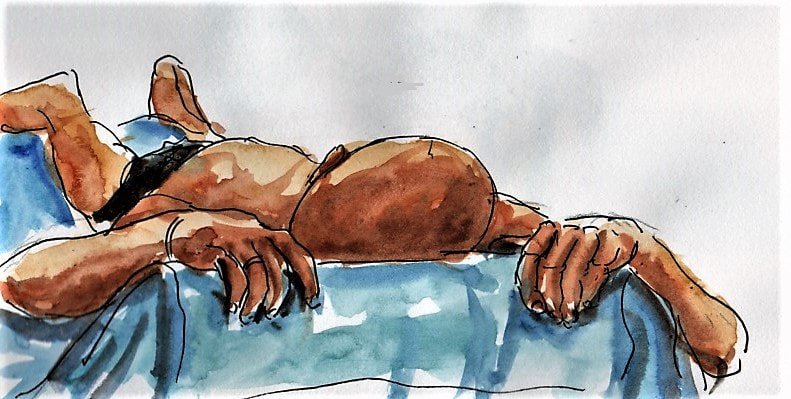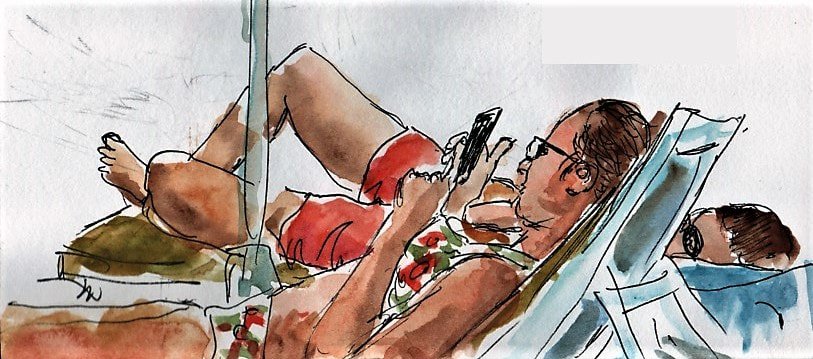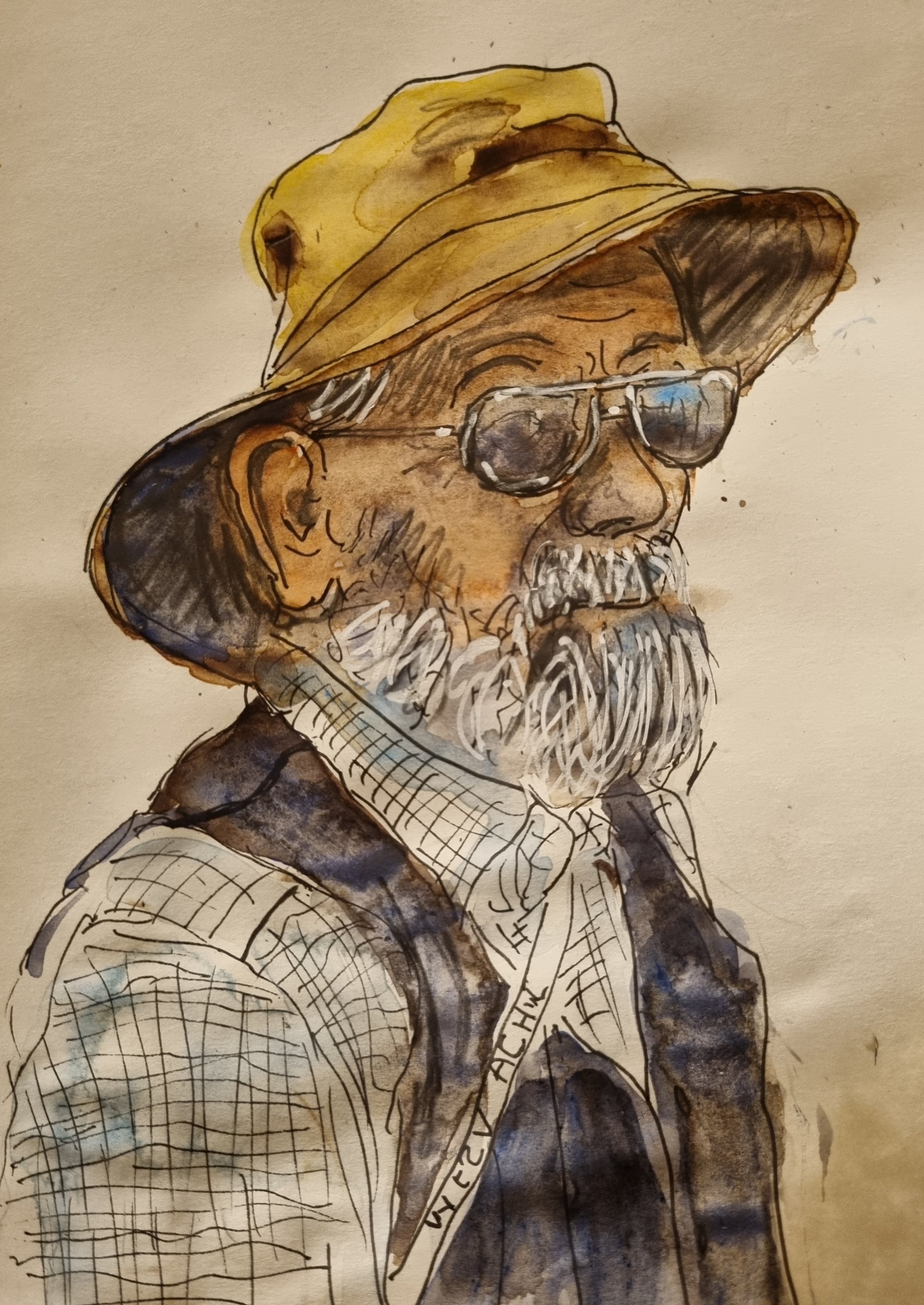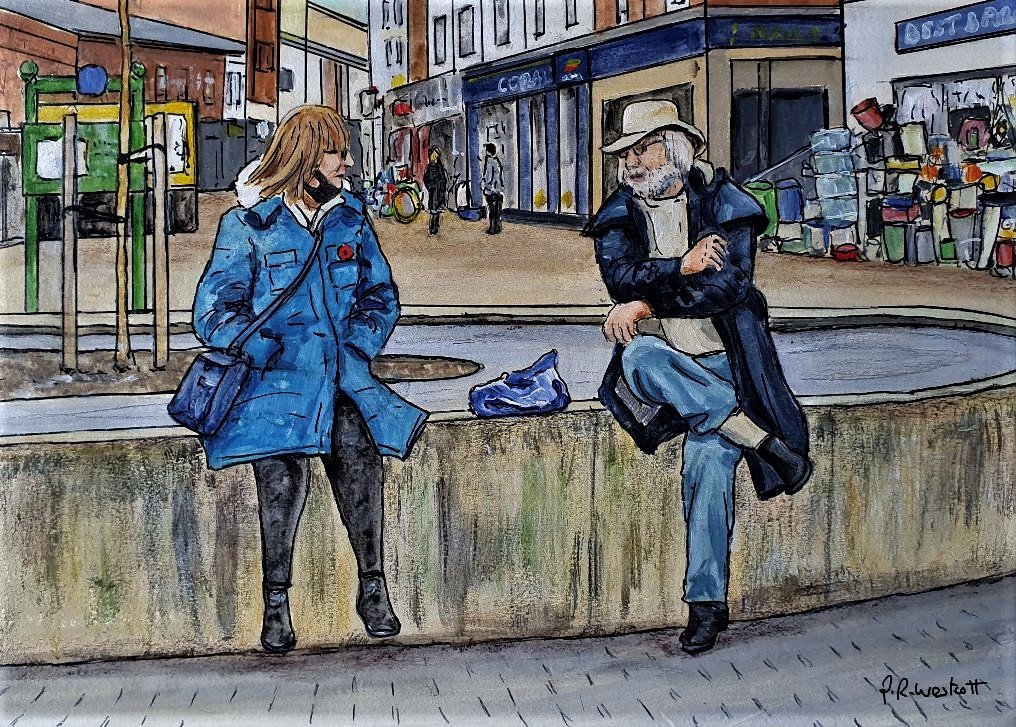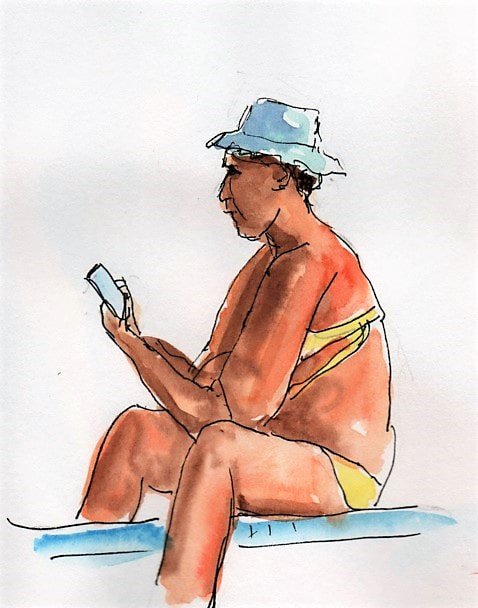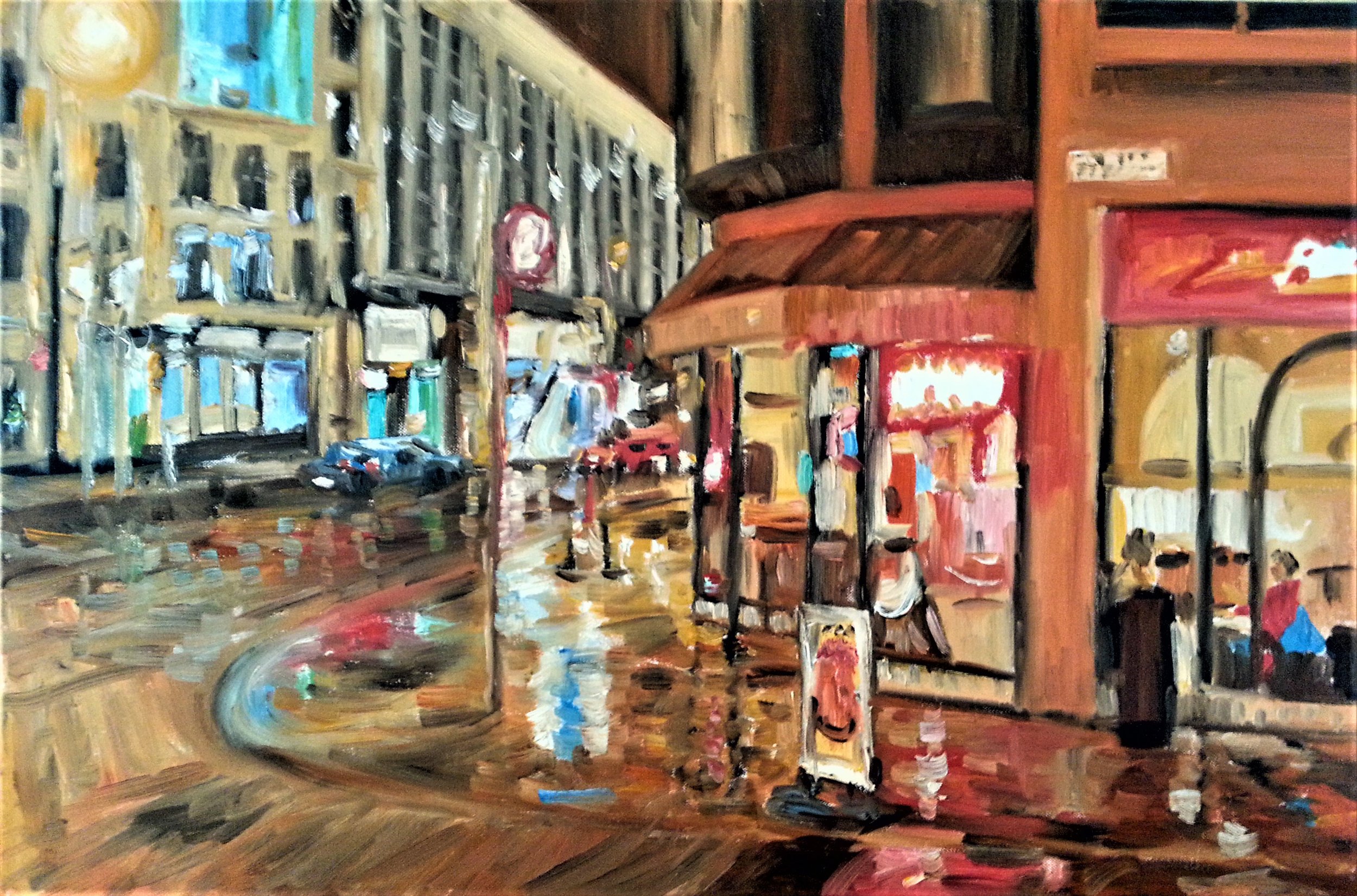ARTIST INTERVIEW: Philip Westcott
Tell me about yourself. When did you first get into art and how has your work evolved since then?
I studied art at O and A level, before doing a teaching course in Art and Technology at Leeds and Carnegie Education college. Fortunately, during my teenage years at Salford Grammar school, I had a good grounding in art practices, winning house art competitions and having my work published in the school magazine. When given the chance, I would often sketch my classmates, which helped me to develop my interest in figurative and portrait work.
When did you decide to pursue a career as an artist? Has this always been your vocation?
I have always produced artwork and was fortunate that in the early 80’s I was backed by several important people, including Lord Rhodes; Lord Lieutenant of Lancaster, and very interested in the arts. During that time, not as many artists were painting urban scenes or recording the changing landscape. I focused my work on the rise of the modern shopping centres and the interaction of the shoppers. My work was always in demand. However, I did have a break for several years as family and teaching took over. Fortunately, due to taking early retirement, I have reignited my interest in my artwork and returned to painting.
Your interest in figurative art was established in a shopping centre in Salford. What types of poses did you see that inspired you in this shopping centre, that you hadn’t seen before?
When answering the question about why I started by capturing people in Salford Shopping centre, I suppose it goes back to my childhood. Every Saturday my parents would go to Salford market. My mother would buy her fruit and vegetables and my father would exchange his paperbacks. Wandering around whilst they were busy, I absorbed those images, and they must have had a lasting effect on me. I started by painting market scenes, but soon became fascinated by the new build of Salford Shopping Centre. Also, at the time, the terraced houses in Salford were being demolished and the people were being moved into nearby flats. The older residents would come to the centre and use it as a meeting place. They made a brilliant subject matter.
How important is the architecture in the background to you when painting a figurative work?
At times, I have included the shops etc. in my paintings, as they give a context to the time and place. If I concentrated more on the people, I would then simplify the background so that the people became the focal point. Also, I realised that all the shopping centres were losing their individuality and now contained the same stores, so they became less important.
What are the characteristics of an interesting subject to draw or paint?
I like to capture the interaction between the people I paint, observing what are they doing and wondering what they are talking about. Other influences have been events such as; Royal celebrations, from the late Queen’s silver jubilee, to the royal weddings past and present. How the British public respond to these festivities, has provided me with a rich and diverse subject matter.
More recently I have spent a great deal of time observing people affected by the covid rules. I painted queues of people outside the supermarket, NHS workers and the day to day lives of everyday people throughout the pandemic. I collated all my work and produced a book as a record of those testing times.
As a contrast I also paint views of the countryside using either oils, acrylics, or watercolours. Here, I will often paint these landscapes void of people, capturing the scene in heightened colour and highlighting the beauty of nature.
You keep a sketchbook. What is your latest entry? Why do you like doing quick sketches?
I like to do quick sketches as a way to keep ‘my eye in’, and these often provide the inspiration for my future paintings. It is also a good way to pass the time! My most recent work has been capturing people on a Caribbean cruise.
How has your work evolved over time? What have you learnt about yourself whilst being an artist?
My early shopping centre paintings, in oils, often took a few months to paint, so I would work on two or three at the same time. For another series of paintings, I wanted to work quicker so started to use acrylics, as I could finish a painting within a week. This obviously affected my style, which allowed me to simplify my shapes and work on a smaller scale.
With my landscapes, I started by using watercolour but as time passed, I returned to oils, where I used a palette knife, as I wanted to capture the fragmented light and texture of these scenes.
I find now with my recent cityscapes, I’m after a loose effect, which has made me aware that I don’t need so much detail to achieve the effect I’m after.
I have also become interested in digital art and use an iPad, and am now experimenting with this media.
If you could own an original of any artwork in the world in your home, what would it be and why?
I would find it difficult to decide on an original artwork as I would be torn between landscape or figurative work. I suppose I would go for a popular piece like Van Gogh’s ‘Café Terrace At Night’ on Forum Square, Arles. This in a way covers both themes. Gogh is also one of the artists I admire, and this painting has fond memories, as a friend bought me the framed print which was on the wall for several years. If I chose a figurative piece of work, it would be a painting by Edward Hopper.
Why do you think art is important in society?
It often seems that art is no longer important in our modern society where everything seems rushed, and people don’t have the time to appreciate it.
However, I feel that there is a resurgence of interest, with events like, the immersive experience of Van Gogh’s work, the touring tent of Banksy and just recently, I visited not only an Art Battle, but a pop-up exhibition of street art.
One good thing that came out of the recent pandemic, was that people had a lot more time on their hands and many returned to painting and realised how therapeutic it could be.
Without creativity, society can become stagnant, and art can uplift people’s thoughts and have an impact on their everyday lives.







